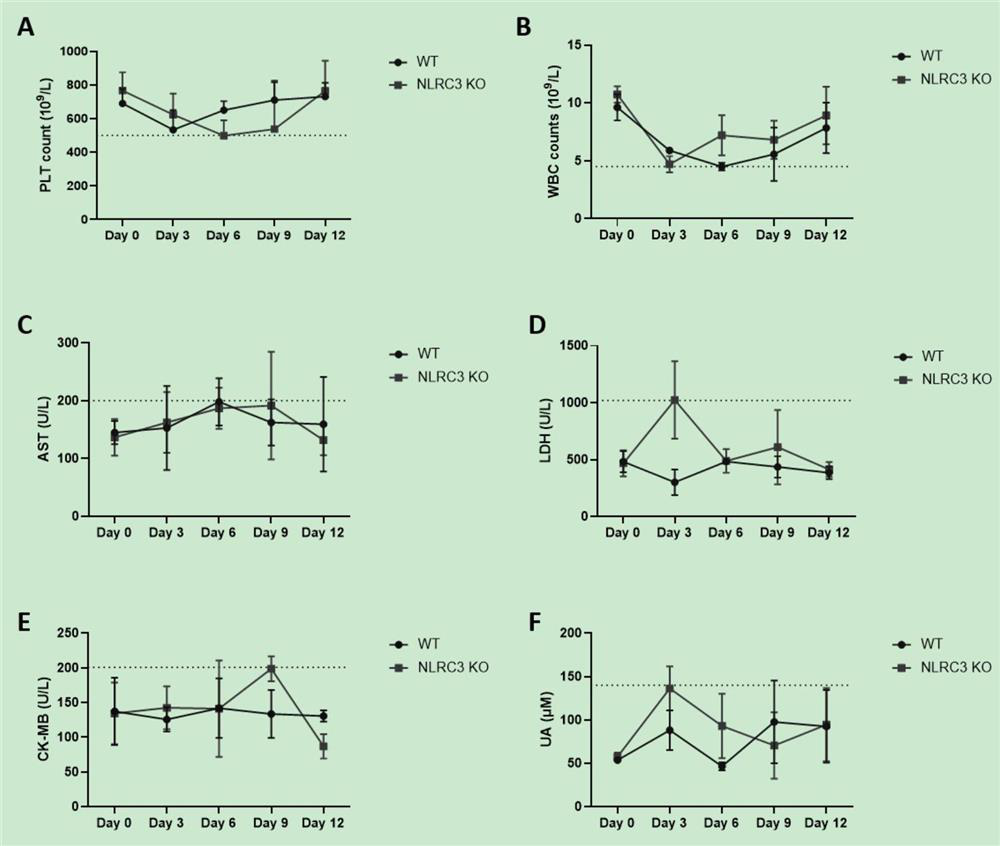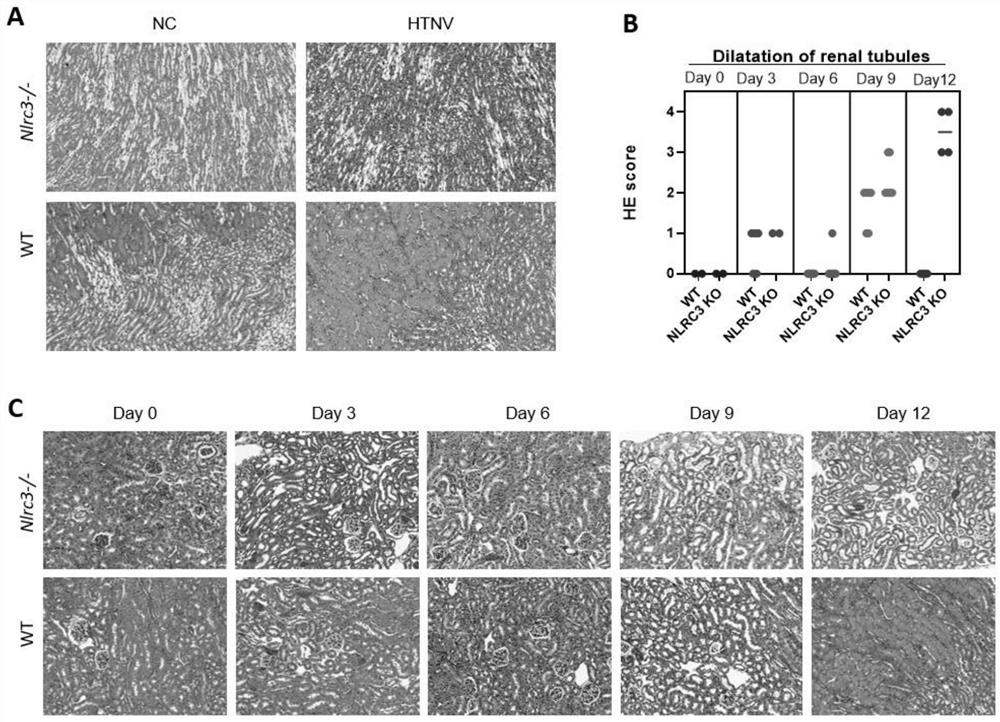Construction methods and uses of animal models simulating the characteristics of various hfrs diseases
An animal model and construction method technology, applied in pharmaceutical formulations, compound screening/testing, preparations for in vivo testing, etc., can solve the problems of mouse nervous system lesions, inability to simulate well, inconsistent characteristics, etc.
- Summary
- Abstract
- Description
- Claims
- Application Information
AI Technical Summary
Problems solved by technology
Method used
Image
Examples
Embodiment 1
[0025] 1. Experimental materials
[0026] (1) HTNV 76-118 strain: HTNV strain is 76-118 strain (international standard strain), which was donated by researcher Hang Changshou of Chinese Center for Disease Control and Prevention, and later preserved and amplified by our laboratory. Vero-E6 cells were infected with HTNV after intoxication in the brain of suckling mice, and the titer of the virus amplified in Vero-E6 cells was used in this study.
[0027] (2) C57BL / 6WT and NLRC3 KO mice: 6-8 weeks old, purchased from Shanghai Southern Model Biology Co., Ltd.
[0028] 2. Experimental method
[0029] (1) Infection experiment of NLRC3 KO mice
[0030] NLRC3 KO mice were infected by intraperitoneal injection of HTNV 76-118 virus, and the infection dose was 5×105PFUs / 50μL / mice, which was recorded as the experimental group, and the uninfected mice were recorded as the control group.
[0031] The body temperature and body weight of the mice were continuously monitored every day after...
PUM
 Login to View More
Login to View More Abstract
Description
Claims
Application Information
 Login to View More
Login to View More - R&D
- Intellectual Property
- Life Sciences
- Materials
- Tech Scout
- Unparalleled Data Quality
- Higher Quality Content
- 60% Fewer Hallucinations
Browse by: Latest US Patents, China's latest patents, Technical Efficacy Thesaurus, Application Domain, Technology Topic, Popular Technical Reports.
© 2025 PatSnap. All rights reserved.Legal|Privacy policy|Modern Slavery Act Transparency Statement|Sitemap|About US| Contact US: help@patsnap.com



